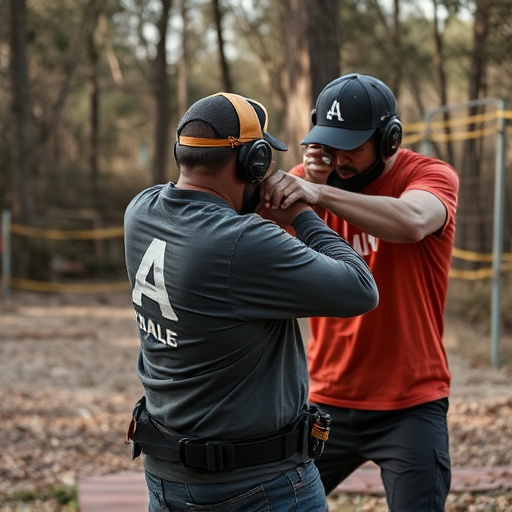Stun guns rely on lithium-ion (Li-ion) or nickel-metal hydride (NiMH) batteries, with Li-ion offering higher energy density but requiring careful charging practices. To maximize battery life, users should: 1) avoid deep discharge, 2) maintain moderate storage temperatures, 3) use approved chargers, 4) regularly check battery health, and 5) practice consistent maintenance like inspecting for damage, cleaning contacts, and checking voltage (ideally between 3.0V-4.2V). Proper storage in cool, dry conditions and avoiding extreme temperatures is also key. Responsible battery disposal through recycling programs is encouraged.
“Uncover the secrets to optimizing your stun gun’s performance with a focus on its critical component—the battery. This comprehensive guide explores the impact of various battery types, offering insights into enhancing and extending their lifespan. Learn practical strategies to maximize energy output while ensuring regular maintenance checks for prolonged battery health.
From understanding battery depletion to responsible replacement and disposal, we provide step-by-step instructions. Discover how to effectively maintain your stun gun’s battery life, a crucial aspect of personal safety.”
- Understanding Battery Types and Their Impact on Stun Gun Performance
- Strategies for Maximizing Stun Gun Battery Life
- Regular Maintenance Checks to Prolong Battery Lifespan
- How to Replace and Dispose of Stun Gun Batteries Responsibly
Understanding Battery Types and Their Impact on Stun Gun Performance

Stun guns, like any electrical device, rely on batteries for their operation. Understanding the types of batteries used and how they affect performance is key to knowing how to maintain stun gun battery life. Common battery types include lithium-ion (Li-ion) and nickel-metal hydride (NiMH). Li-ion batteries are known for their high energy density, making them lighter and more compact while providing longer lifespans between charges compared to NiMH. However, they can be more sensitive to extreme temperatures and require careful charging practices to avoid damage or overheating.
To maximize stun gun battery life, users should follow best practices such as avoiding deep discharge (letting the battery drain completely), keeping the device stored in moderate temperatures, and using approved chargers designed for the specific battery type. Regularly checking battery health through built-in indicators or external tools can also help identify potential issues early on, ensuring optimal performance when it matters most.
Strategies for Maximizing Stun Gun Battery Life

To maximize the lifespan of your stun gun’s battery, consistent maintenance is key. Regularly inspect the device for any signs of damage or wear, especially around the battery compartment. Keep it clean and free from debris to ensure optimal contact points, which can be achieved with a soft brush or cloth. Only use recommended chargers designed specifically for your stun gun model; using incompatible chargers may lead to overcharging or damaging the battery.
Additionally, avoid prolonged storage without charging. Stun guns with dead batteries should be charged fully before being stored again. It’s also beneficial to periodically charge your device even when it shows a full battery indicator to maintain peak performance. Remember, how you care for and store your stun gun directly impacts its overall battery health and longevity.
Regular Maintenance Checks to Prolong Battery Lifespan

Regular maintenance checks are essential for prolonging the lifespan of your stun gun’s battery. This involves a few simple steps that every user should incorporate into their routine. Firstly, inspect the device for any signs of damage or corrosion, especially around the battery compartment. Clean the contacts with a soft, dry cloth to ensure optimal conductivity. Additionally, periodically checking the battery voltage is crucial; most stun guns require a specific voltage range to function efficiently and safely. Using a voltmeter, verify that the battery’s charge remains within the recommended parameters, typically between 3.0V and 4.2V for lithium-ion batteries.
Beyond these checks, storing your stun gun properly is another key aspect of battery maintenance. Avoid leaving it in extreme temperatures or direct sunlight for extended periods. Instead, keep it in a cool, dry place, and when not in use, consider investing in a protective case to maintain its overall condition. These measures will help ensure that the battery remains in top condition, providing reliable performance whenever you need it most.
How to Replace and Dispose of Stun Gun Batteries Responsibly

Stun guns, like any electrical device, rely on batteries for their operation. To ensure optimal performance and safety, it’s crucial to know how to replace and dispose of stun gun batteries responsibly. Regular maintenance starts with understanding the battery life of your specific model. Most stun guns use high-quality lithium-ion batteries that can withstand hundreds of charges before degradation sets in. To maximize battery life, avoid extreme temperatures, keep the device charged between 20% and 80%, and avoid dropping or damaging the unit.
When it’s time to replace a battery, do so in a designated recycling center or through a specialized battery disposal program. Never throw batteries in regular trash as they can leak harmful chemicals. Many manufacturers offer take-back programs for used batteries, ensuring proper recycling. Additionally, familiarize yourself with local regulations regarding stun gun battery disposal to ensure compliance and contribute to environmental stewardship.
Comfortable grip stun gun designs, coupled with proper maintenance, can significantly enhance personal safety. By understanding battery types, maximizing battery life through strategic care, and regularly performing checks, users can ensure their stun guns remain reliable. Remember, a well-maintained stun gun is a powerful tool for self-defense, so learn how to replace and dispose of batteries responsibly to keep yourself and your loved ones safe.
